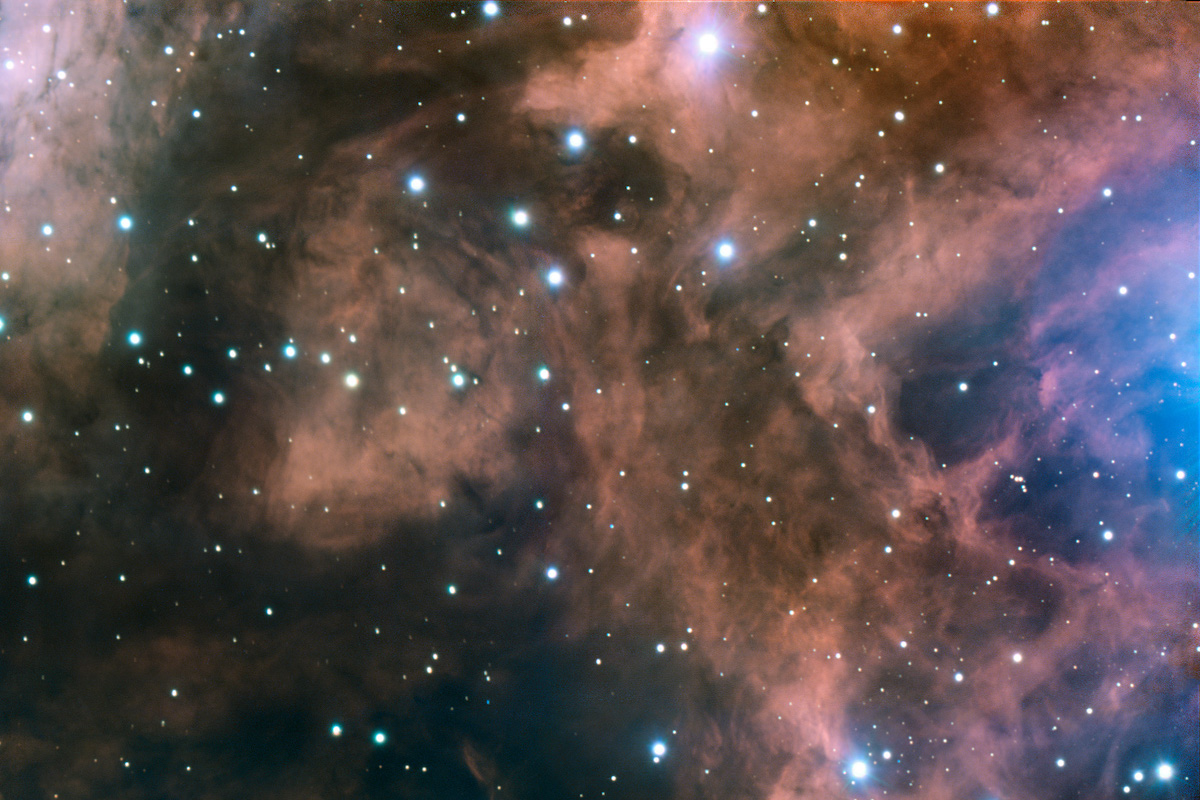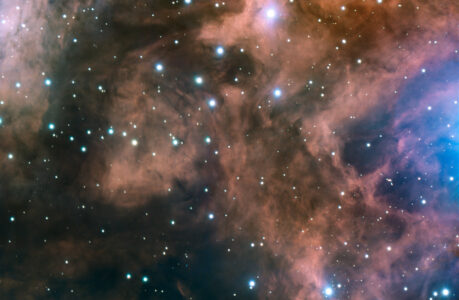Interstellar clouds, also known as molecular clouds, are vast collections of gas and dust that float through the vast expanse of space. These clouds are crucial for the formation of new stars and planets, as they are where the materials necessary for these celestial bodies are born. Interstellar clouds can be found throughout our galaxy and beyond, and they come in a wide variety of shapes and sizes.
One of the most famous interstellar clouds is the Orion Nebula, a stunningly beautiful and colorful cloud that can be seen with the naked eye from Earth. This cloud is located in the constellation Orion and is about 1,344 light-years away from our planet. The Orion Nebula is home to many young stars that are still in the process of forming, and it is believed to contain more than 1,000 times the mass of our sun.
Interstellar clouds are not just beautiful to look at; they are also essential for the formation of life as we know it. When stars are born within these clouds, they create heavy elements that eventually make their way into new planets. Without these clouds, the universe as we know it would be a much emptier and less interesting place.
Despite their importance, interstellar clouds are still a mystery to astronomers. One of the biggest questions surrounding these clouds is how they manage to hold together over such vast distances. The answer lies in the gravitational forces between the particles that make up the clouds. These forces keep the gas and dust from drifting apart and help to create the beautiful, swirling patterns that we see in these clouds.
Interstellar clouds also provide a unique opportunity for astronomers to study the chemical composition of the universe. By analyzing the light that passes through these clouds, scientists can learn more about the elements that make up our universe and how they are distributed throughout space.
In conclusion, interstellar clouds are a fascinating and mysterious part of our universe. They play a crucial role in the formation of new stars and planets, and they are essential for the creation of heavy elements that make life possible. As we continue to explore the cosmos, we will undoubtedly uncover even more secrets about these beautiful and awe-inspiring clouds.
How can we study their Chemical composition?
Studying the chemical composition of interstellar clouds is a complex and challenging task that requires sophisticated equipment and techniques. One of the most commonly used methods is spectroscopy, which involves analyzing the light that passes through the cloud. When light passes through a cloud, some of it is absorbed by the gas and dust particles in the cloud, creating a unique spectral signature that can be analyzed to determine the chemical composition of the cloud.
Spectroscopy can be performed using ground-based telescopes or space-based observatories such as the Hubble Space Telescope or the Spitzer Space Telescope. In addition, radio telescopes are also used to study interstellar clouds by detecting the radio waves emitted by the molecules within the cloud.
Another technique used to study interstellar clouds is called millimeter-wave astronomy, which involves observing the emissions from molecules in the cloud at millimeter wavelengths. This technique can be used to study the distribution and abundance of different molecules within the cloud, providing insight into the chemical processes that occur within the cloud.
Overall, the study of interstellar clouds’ chemical composition is a critical area of research that helps us better understand the formation and evolution of our universe. By analyzing the elements that make up these clouds, scientists can gain insights into the processes that drive star and planet formation and the origins of life itself.
How are Interstellar clouds involved in Star formation
Interstellar clouds play a crucial role in star formation. These vast clouds of gas and dust are the birthplace of new stars, providing the raw materials necessary for their formation.
The process of star formation begins when a small disturbance or shock wave passes through an interstellar cloud, causing it to collapse and fragment into smaller, denser regions. These dense regions, known as protostellar cores, continue to collapse under their own gravity until the temperature and pressure at their centers are high enough to trigger nuclear fusion, the process that powers a star.
The formation of protostellar cores requires a delicate balance between gravity and pressure. Without the gravitational attraction between particles in the cloud, the cloud would continue to expand and dissipate. But if gravity becomes too strong, the cloud will collapse and form a single massive star, leaving no material for the formation of other stars.
Interstellar clouds help to maintain this delicate balance by providing the necessary mass and density for protostellar cores to form. The gravitational forces between particles in the cloud allow it to collapse and fragment, creating numerous protostellar cores that will eventually become stars.
The chemical composition of interstellar clouds also plays a critical role in star formation. As the cloud collapses and heats up, chemical reactions occur that produce complex molecules such as water and ammonia. These molecules provide a surface on which dust particles can stick together, eventually forming larger particles that can settle into the protostellar core and continue to grow.
In conclusion, interstellar clouds are essential for the formation of new stars. These vast collections of gas and dust provide the raw materials necessary for the formation of protostellar cores, which eventually become stars. Without interstellar clouds, the universe would be a much emptier and less interesting place.
How are interstellar clouds formed?
Interstellar clouds are formed from the remnants of previous generations of stars. When a star runs out of fuel and dies, it explodes in a massive explosion known as a supernova. This explosion releases enormous amounts of energy and sends shock waves through the surrounding space, causing the gas and dust in the region to compress and collapse into new interstellar clouds.
The composition and size of these clouds depend on the mass of the original star and the properties of the surrounding space. For example, massive stars that undergo supernova explosions can create large, diffuse clouds that can span hundreds of light-years. In contrast, smaller stars may produce smaller, denser clouds that are more tightly packed with gas and dust.
Interstellar clouds can also form from the collision of two or more clouds or through the gravitational attraction between particles in a cloud. When two clouds collide, the force of the impact can cause the gas and dust to compress and collapse, forming a new cloud. Similarly, the gravitational attraction between particles in a cloud can cause it to collapse and fragment into smaller, denser regions that eventually become protostellar cores.
The exact mechanisms behind the formation of interstellar clouds are still not fully understood, and scientists continue to study these phenomena to gain a better understanding of the processes that drive the formation and evolution of our universe.
In conclusion, interstellar clouds are formed from the remnants of previous generations of stars through a complex interplay of forces and processes. These vast collections of gas and dust are crucial for the formation of new stars and play a vital role in shaping the structure and evolution of our universe.

